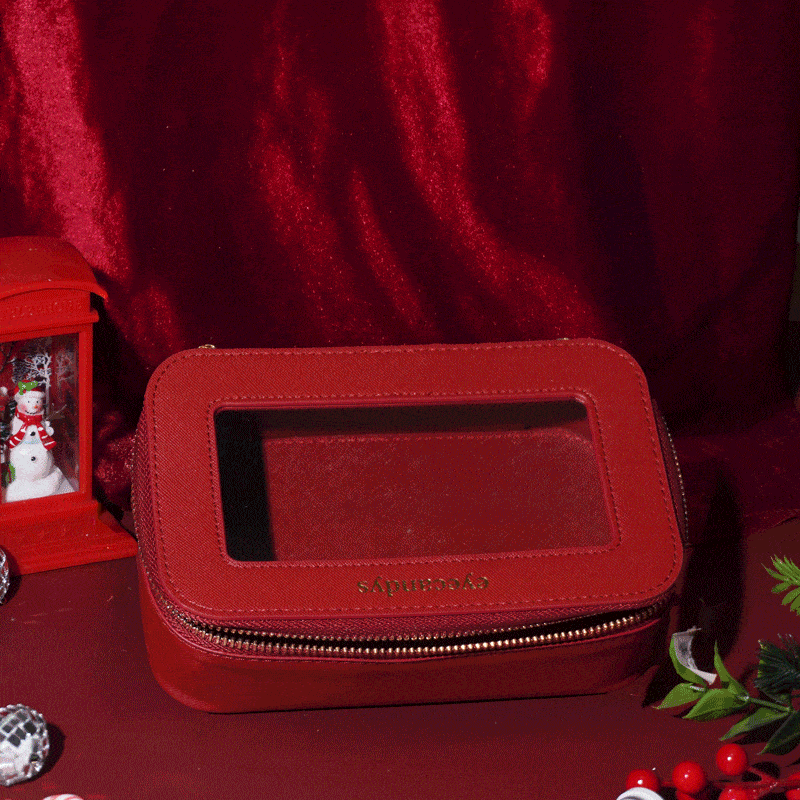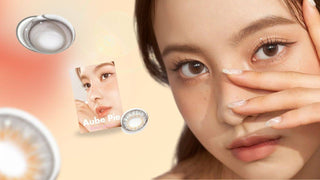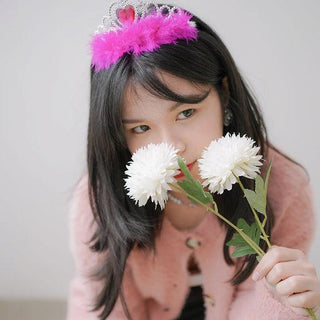Step into the realm of transformative eye fashion with our comprehensive guide to circle contact lenses. Discover how these versatile lenses can enhance your eyes, allowing you to experiment with new looks and correct your vision simultaneously. Here is everything you ever wanted or needed to know about circle contact lenses.
Circle Lenses 101
In the realm of eye fashion, circle lenses have emerged as a game-changer, redefining the boundaries of self-expression and vision correction.
The advent of circle lenses has sparked a paradigm shift in the way we perceive eye fashion. Unlike traditional contact lenses designed solely for vision correction, circle lenses transcend their functional purpose, becoming a canvas for artistic expression and individuality. Available in a variety of colors, intricate designs, and varying diameters, circle lenses can be an extension of your personality and style.
From subtle enhancements to dramatic transformations, circle lenses offer an unparalleled opportunity to reinvent one's appearance. Whether it's for everyday wear, special occasions, or the realm of cosplay, these lenses have seamlessly integrated into modern fashion and beauty routines. With circle lenses, the eyes become a captivating focal point, drawing attention and sparking conversations wherever one goes.
Beyond Aesthetics: The Corrective Power of Circle Lenses
While circle lenses have gained popularity primarily for their cosmetic appeal, they also have a remarkable ability to correct vision. This section delves into the corrective power of circle lenses, exploring how they function and the individuals who can benefit from their corrective properties.
By gently altering the corneal curvature, circle lenses can effectively correct a range of refractive errors, including:
- Myopia (nearsightedness): Myopia occurs when the eyeball is elongated or the cornea is too curved, causing distant objects to appear blurry. Circle lenses can reshape the cornea to improve distant vision, allowing myopic individuals to see clearly without the need for glasses or traditional contact lenses.
- Hyperopia (farsightedness): Hyperopia is the opposite of myopia, where distant objects appear clear but close objects become blurry. Circle lenses can correct hyperopia by flattening the cornea, enabling individuals to see nearby objects more clearly.
- Astigmatism: Astigmatism arises from an irregularly shaped cornea or lens, resulting in blurred or distorted vision at all distances. Circle lenses can effectively correct astigmatism by compensating for the irregularities in the corneal curvature, providing clearer vision.
The corrective power of circle lenses extends beyond the realm of common refractive errors. They can also be employed to address presbyopia, an age-related condition that affects the ability to focus on close objects. Circle lenses designed specifically for presbyopia incorporate multifocal or progressive lens technology, allowing individuals to see clearly at various distances without the need for reading glasses.
Circle lenses have emerged as a game-changer for individuals seeking both vision correction and a distinctive appearance. Their ability to simultaneously enhance aesthetics and improve vision has made them a popular choice among those who prioritize both fashion and functionality.
Types of Circle Lenses
Circle lenses come in a range of diameters, which can significantly impact the overall appearance of the eyes. Smaller diameters, typically between 14.0mm and 14.5mm, provide a more natural look, subtly enhancing the eyes without drastically altering their size. These lenses are ideal for those seeking a subtle change or for those new to wearing circle lenses.
For a more dramatic effect, larger diameters can be chosen. Lenses with diameters ranging from 14.5mm to 15.0mm create a noticeable enlargement of the eyes, giving them a more captivating and alluring appearance. These lenses are popular among those seeking a more striking look and are often used for special occasions or events.
However, it's important to note that excessively large diameters, typically above 15.0mm, can result in a doll-like or unnatural appearance. These lenses should be used with caution and may not be suitable for everyday wear.
In addition to diameter, circle lenses also come in a variety of designs and colors. Natural designs mimic the iris's natural pattern and color, providing a seamless blend with the wearer's natural eye color. These lenses are ideal for those seeking a subtle enhancement or for those who want to correct vision without drastically altering their appearance.
- Gradient designs feature a gradual transition of color from the center of the lens to the outer edge, creating a more dramatic and captivating effect. These lenses are available in a wide range of color combinations, allowing wearers to experiment with different looks.
- Patterned designs, on the other hand, feature intricate patterns or graphics on the lens, adding a touch of individuality and flair to the eyes. These lenses are perfect for those seeking a unique and expressive look and are often used for cosplay, special events, or to simply stand out from the crowd.
Circle lenses are available with or without prescription, catering to the needs of both those with and without refractive errors. Prescription circle lenses can correct a range of vision problems, including nearsightedness, farsightedness, and astigmatism. They provide the dual benefit of vision correction and aesthetic enhancement, making them an excellent choice for those who want to improve their vision and experiment with their appearance.
When considering prescription circle lenses, it's crucial to consult with an eye care professional to ensure proper fitting and prescription accuracy. The eye doctor will assess the wearer's eyes, determine the appropriate lens diameter and power, and provide guidance on lens care and maintenance.
A Safe Choice for Your Eyes
Circle lenses are a safe and effective way to enhance your appearance or correct your vision. They are manufactured using high-quality materials and undergo rigorous testing to ensure that they meet safety standards.
Circle lenses are made from a soft, flexible material that is comfortable to wear. They are also designed to be breathable, allowing oxygen to reach your eyes. This helps to keep your eyes healthy and prevents irritation.
Before being sold, circle lenses must pass a series of tests to ensure that they are safe for use. These tests include:
Biocompatibility testing: This test ensures that the material used to make the circle lenses does not cause any allergic reactions or other adverse effects on the eyes.
Toxicity testing: This test ensures that the materials used to make the circle lenses do not contain any harmful chemicals that could leach into the eyes.
Visual acuity testing: This test ensures that the circle lenses do not interfere with your vision.
Durability testing: This test ensures that the circle lenses can withstand normal wear and tear.
In addition to these tests, circle lenses are also subject to regular inspections by government agencies to ensure that they continue to meet safety standards.
Choosing the Right Circle Lenses
Eye Shape and Size
Matching Lens Diameter and Graphic Diameter for a Natural Look
While lens diameter (the overall size of the circle lens) plays a role, Graphic Diameter (GD) is a more precise way to determine how much the colored part of the lens (the graphic) will widen your iris. This directly impacts the look and fit of your colored contacts.
Here's a guide to choosing the right GD for your desired effect:
-
GD > 14.5mm: Huge, Dramatic, Costume-Ready: This size creates a doll-like appearance and is best suited for cosplay or costumes.
-
GD > 14.0mm: Extra Large, Anime-Inspired: This size creates a dramatic, doll-like look with larger, anime-style eyes. It might appear unnatural for everyday wear, especially with smaller eyes.
-
GD > 13.7mm: Large, Doll-Like (with Limits): This size creates a doll-like effect that might look natural on people with already large eyes.
-
GD > 13.3mm: Slightly Larger, Natural Sparkle: This size is slightly larger than a typical human iris and creates a wide-eyed, innocent look that's still natural. It adds a touch of brightness and vibrancy to your eyes.
-
GD < 13.3mm: Natural Look: This size is considered the most realistic option as it closely matches the average human iris diameter (around 12.8mm). It provides a subtle enhancement without looking unnatural.
Remember: Consider both your eye size and desired look when choosing the GD of your colored contacts.
Skin Tone and Hair Color
Circle lenses come in a wide array of colors, and selecting a shade that harmonizes with your skin tone and hair color can significantly enhance your overall appearance. For instance, individuals with fair skin and light-colored hair may opt for subtle brown or hazel lenses to create a natural and effortless look. Those with darker skin tones and hair can explore bolder colors like blue, green, or violet to add a touch of vibrancy and contrast to their eyes.
Desired Look and Effect
Circle lenses offer the versatility to achieve various looks, from subtle enhancements to dramatic transformations. If you prefer a natural look, choose lenses that closely resemble your natural eye color and have a subtle limbal ring to create a seamless blend. For a more dramatic effect, opt for lenses with vibrant colors, bold patterns, or larger diameters to make your eyes stand out. Cosplay enthusiasts can explore specialized circle lenses that feature intricate designs inspired by anime, manga, or other fictional characters.
Matching Lens Design and Color to Achieve the Desired Look:
To achieve your desired look effectively, consider the lens design and color in conjunction. Natural-looking lenses often feature a radial pattern that mimics the natural iris texture, while gradient lenses offer a gradual transition of color for a more dimensional effect. Patterned lenses add a touch of creativity and uniqueness to your eyes. Experiment with different combinations of lens designs and colors to find the perfect pair that complements your style and personality.
Caring for Your Circle Lenses
Caring for your circle lenses is essential to ensure their longevity and maintain optimal comfort during wear. Here are some key practices to follow:
- Regular Cleaning: Just like your eyeglasses, circle lenses require regular cleaning to remove dirt, debris, and protein buildup. Use a contact lens cleaning solution and gently rub the lenses with your fingertips or a soft cleaning brush. Rinse them thoroughly with the solution and store them in a clean lens case.
- Proper Storage: When not in use, store your circle lenses in a clean, airtight container filled with fresh contact lens solution. Avoid storing them in water, as it can encourage bacterial growth. Replace the solution in the lens case daily to prevent contamination.
- Avoid Prolonged Wear: To maintain eye health, it's crucial to avoid wearing circle lenses for extended periods. Follow the recommended wear time specified by your eye care professional. Overwearing lenses can deprive your eyes of oxygen, leading to potential complications.
- Handling with Care: Handle your circle lenses with clean hands to prevent contamination. Avoid touching the inner surface of the lenses, as this can transfer oils and debris from your fingers. Always rinse your hands thoroughly before handling your lenses.
- Schedule Regular Eye Check-ups: Regular eye check-ups are essential to monitor your eye health and ensure the continued suitability of your circle lenses. Your eye doctor can assess the health of your eyes, check for any potential complications, and advise you on the appropriate wear and care regimen for your lenses.
By following these care instructions, you can prolong the lifespan of your circle lenses and enjoy comfortable wear while enhancing your appearance or correcting your vision.
For more on colored contact lenses, explore these helpful articles:
-
How Long Do Colored Contacts Last to understand their lifespan and care
-
How Do Colored Contacts Work for a look at their design and function
-
Types of Cosmetic and Corrective Lenses to explore the variety available for both style and vision needs.







